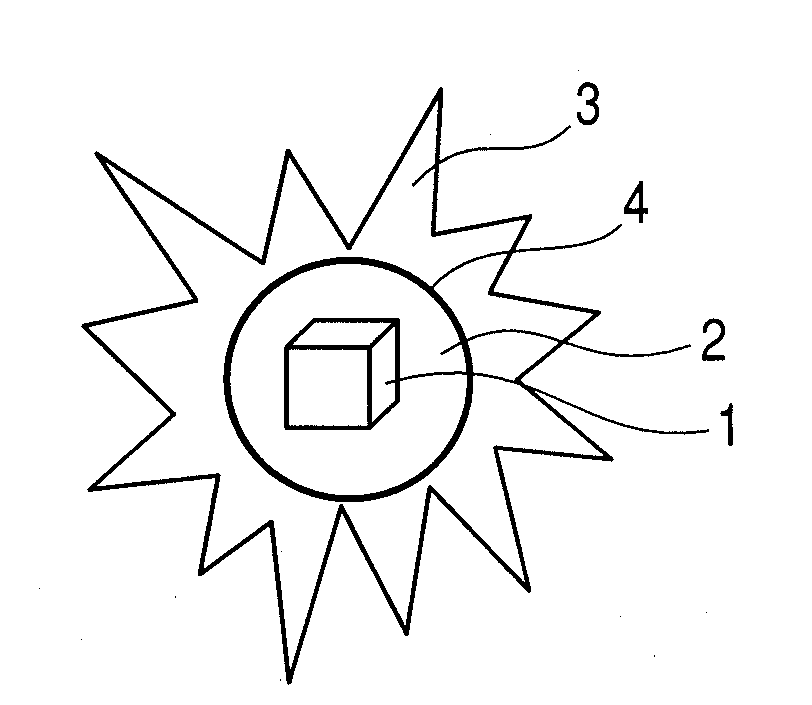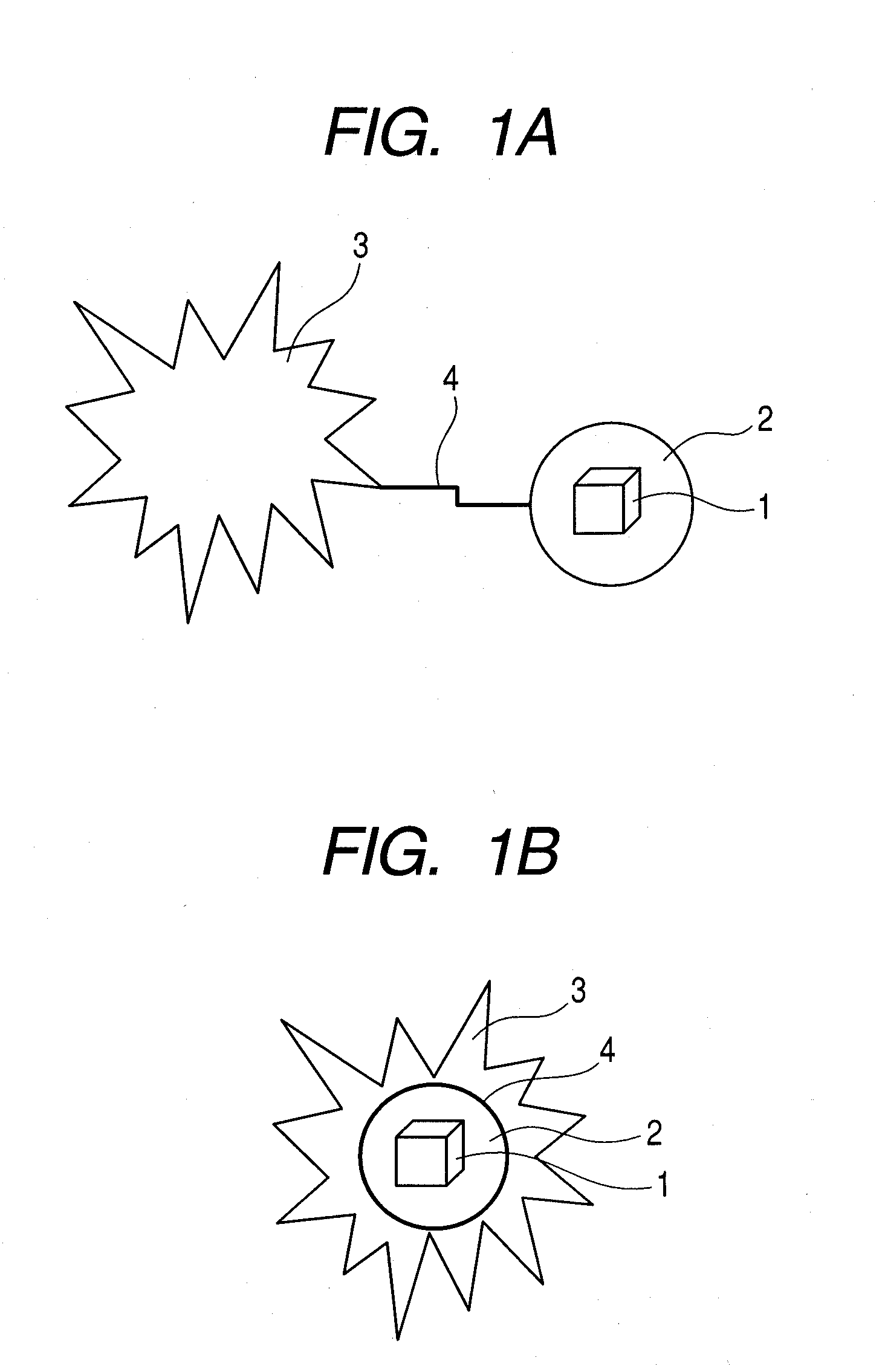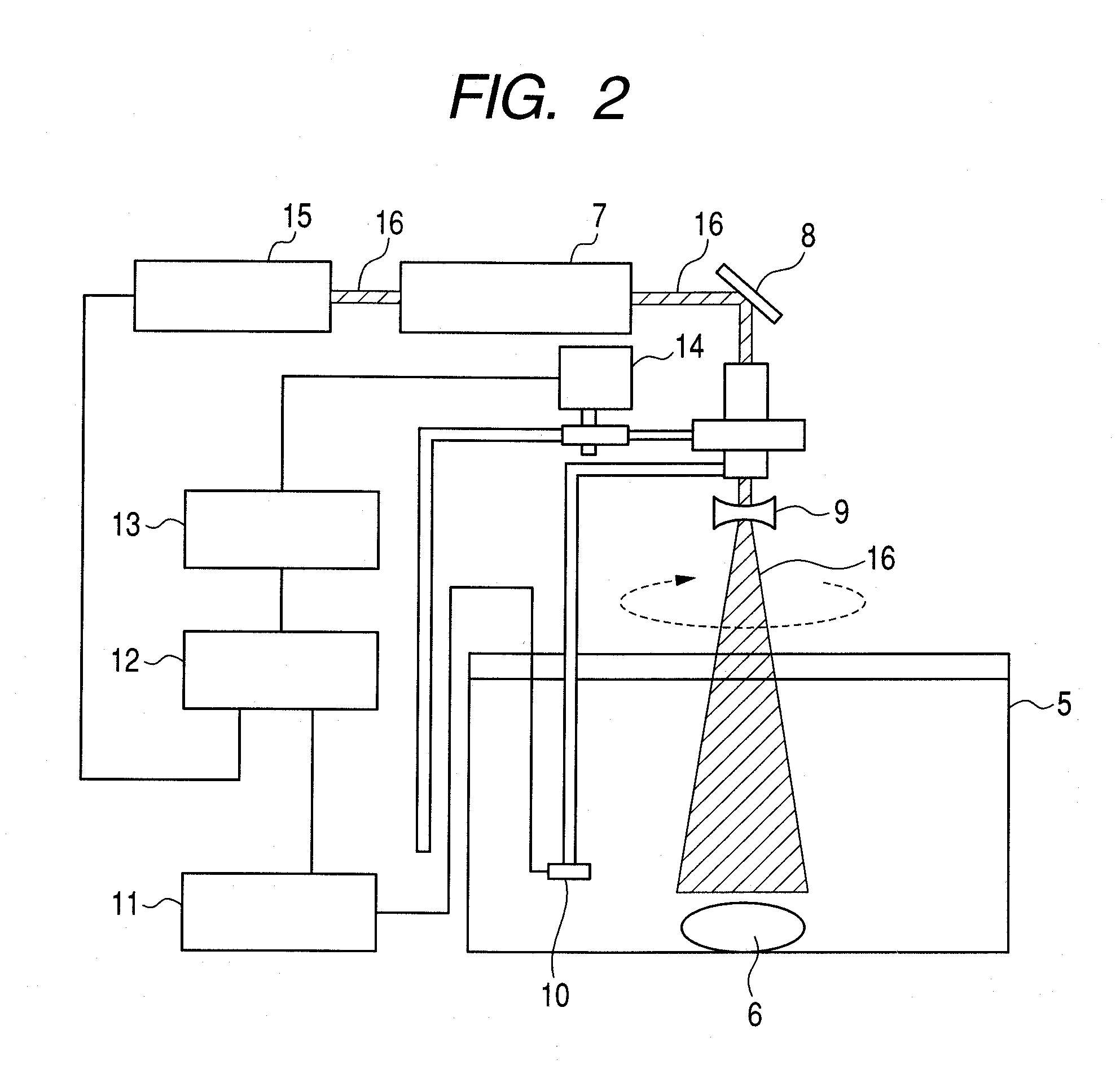Photoacoustic imaging agent
a technology of photoacoustic imaging and imaging agent, which is applied in the field of photoacoustic imaging agent, can solve the problems of large difference in optical properties between normal and diseased parts, increase in the incidence of diseases such as tumors and arteriosclerosis, and become a major social problem, and the contrast of images obtained of the deep regions of the body is very low
- Summary
- Abstract
- Description
- Claims
- Application Information
AI Technical Summary
Benefits of technology
Problems solved by technology
Method used
Image
Examples
example 1
[0059]Preparation of Photoacoustic Imaging Agent
[0060]0.5 g of potassium bromide (molecular weight 119.01) was dissolved in pure water and the volume made up to 1 ml to prepare 4.2 M aqueous solution (this concentration was close to the saturation concentration of 1 g / 1.5 ml). This aqueous solution of potassium bromide was crushed and dispersed with pressurized air and the mist produced was graded and mixed with dry air of normal temperature to prepare nanocrystals of size 60 nm to 100 nm. AP-9000G manufactured by Shibata Scientific Technology Ltd. was used as the particle generator in this step. The mean particle size was measured by the dynamic light scattering method.
[0061]These potassium bromide fine crystals were dispersed, as the core part, in paraffin, and polyethylene glycol having terminal N-hydroxysuccinimide ester (NHS) and mean molecular weight 12,000 (manufactured by NOF Corporation) was added thereto to adsorb it around the core part to form a core-shell structure. The...
example 2
[0062]Diagnosis using the Photoacoustic Imaging Agent
[0063]The material in Example 1 is used as a photoacoustic imaging agent. The entire amount of the agent was intravenously administered into a mouse that expressed the mouse macrophage receptor in its lungs. 30 minutes later, 633 nm He—Ne laser pulses were irradiated at the intensity of 32 mJ / cm2, and the acoustic signals from the receptor-expressing part of the mouse's lung were measured in water with a plurality of Immersion Transducers (proprietary name, manufactured by Toray Engineering Co. Ltd.). During this procedure, at least the part of the mouse that contained the lungs was positioned in water. The distance between the receptor-expressing site and the Immersion Transducers was estimated from the time delay between the irradiation of the laser pulses and the time at which the acoustic signals were detected, as illustrated in FIG. 6. The acoustic signals observed at several points around the mouse were image-processed by th...
example 3
[0064]Preparation of a Photoacoustic Imaging Agent having Peak Absorption at 680 nm
[0065]1 ml of a mixed aqueous solution containing 0.06 g of potassium bromide (molecular weight 119.01) and 0.74 g of rubidium bromide (molecular weight 165.39) was prepared. The potassium bromide and rubidium bromide were present in this mixed aqueous solution at an approximate molar ratio of 1:9. Formation of the nanoparticle core part, shell part, and marker conjugate was carried out using the same techniques as in Example 1 to prepare a photoacoustic imaging agent suited for near-infrared laser diode of wavelength 680 nm.
[0066]According to the preferred embodiments of the present invention described above, we can obtain photoacoustic imaging agents having a structure that can convert an input signal that is near-infrared faint light of not more than MPE into a large acoustic output signal.
PUM
 Login to View More
Login to View More Abstract
Description
Claims
Application Information
 Login to View More
Login to View More - R&D
- Intellectual Property
- Life Sciences
- Materials
- Tech Scout
- Unparalleled Data Quality
- Higher Quality Content
- 60% Fewer Hallucinations
Browse by: Latest US Patents, China's latest patents, Technical Efficacy Thesaurus, Application Domain, Technology Topic, Popular Technical Reports.
© 2025 PatSnap. All rights reserved.Legal|Privacy policy|Modern Slavery Act Transparency Statement|Sitemap|About US| Contact US: help@patsnap.com



